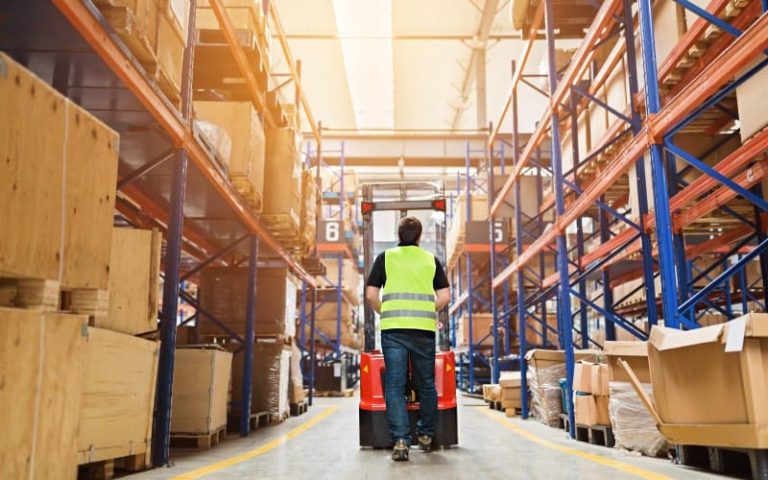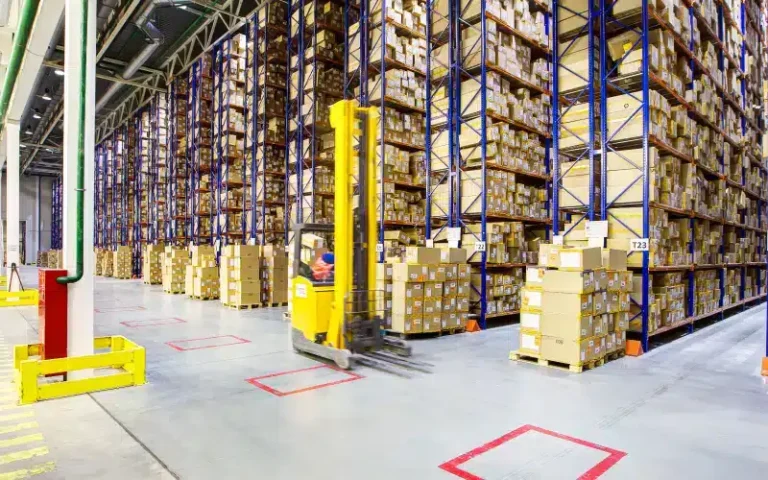Warehouse operators have a long list of challenges these days. Rising cost of goods and labor costs. Difficulty hiring and retaining workers. Increased energy bills. Tariffs. And the constant demand for faster-faster-faster.
It can wear you down.
Automation is the solution, but knowing how to automate your warehouse can be a challenge, too. Where do you start?
Let’s walk you through the process step-by-step to break it all down.
Why Automate Your Warehouse?
Before diving into the how, let’s quickly review the why. Warehouse automation offers a range of operational and financial benefits:
- Faster order fulfillment by reducing travel time and manual picking
- Improved accuracy through machine precision and barcode/RFID systems
- Reduced labor costs by automating repetitive and strenuous tasks
- Enhanced space utilization via automated storage and vertical systems
- Real-time visibility with connected control systems and data tracking
These are just a few of the reasons warehouse owners are investing in automation at a staggering pace.
How to Automate a Warehouse: Step-by-Step
The first step in learning how to automate your warehouse is understanding your current workflow.
Step 1: Evaluate Your Current Warehouse Operations
You need to understand the problems you want to solve. It helps to identify the common issues, such as:
- Frequent inventory errors or mispicks
- Slow fulfillment or shipping delays
- Underused vertical space
- High labor dependency for repetitive tasks
A full audit of your layout, equipment, workflow, and throughput will highlight where automation could have the most impact.
Step 2: Define Your Automation Goals
Once you’ve identified your operational challenges, outline what you want automation to achieve. This may include:
- Shortening warehouse cycle times
- Reducing human error
- Improving safety
- Increasing storage capacity
- Handling higher-order volumes
- Reducing labor costs
Establishing clear KPIs upfront will guide technology selection and help track ROI. At this stage, it’s also a good idea to establish baseline measurements for your goals so that you can compare them after automating.
Step 3: Plan Your Layout and Workflow
Automation is only as effective as the environment. Working with warehouse planning and design experts like Conesco Storage Systems can help you optimize:
- Flow of goods: From receiving to storage to outbound
- Picking paths: Minimizing unnecessary travel
- Storage zones: Designing high-density storage around fast movers
- Safety zones: Isolating automated areas for personnel safety
One mistake warehouse operators sometimes make is underestimating future needs. Your layout should be able to scale as you grow or your product mix changes.
Step 4: Choose the Right Technologies
There are many options when it comes to how to automate a warehouse, and the best mix depends on your goals. The experts at Conesco Storage Systems can help you find the solutions that fit your unique needs, including automation such as:
- Conveyor systems: Move items efficiently through the facility
- Automated storage and retrieval systems (AS/RS): Maximize vertical space and automate storage
- Autonomous mobile robots (AMRs): Transport goods independently
- Warehouse control systems (WCS): Coordinate automated equipment and real-time data
- Sortation systems: Automatically identify and direct items based on barcodes or RFID
In evaluating technology, you will want to ensure that whatever you get will integrate with your warehouse management system and any existing equipment you plan to use.
Step 5: Create a Realistic Implementation Plan
Automation doesn’t have to happen all at once. Staged rollouts can minimize disruption. Regardless, your implementation plan should be realistic, including:
- Timelines with milestones
- Equipment lead times and installation schedules
- Permitting and compliance requirements
- Coordination with engineers for stamped layout drawings
Don’t overlook the importance of local permitting, especially for mezzanines, racking systems, or electrical installations tied to automation.
Do yourself a favor and build in some pad time. There are often unforeseen situations that can add time to your installation.
Step 6: Train and Prepare Your Staff
You’ll also need to plan for training your team. Automation can make people concerned about their jobs or whether they’ll be able to adapt. You need to provide them with an honest assessment of what’s going to happen and train them to:
- Operate new systems and interfaces
- Perform basic troubleshooting
- Adapt to changed workflows
- Shift into higher-value roles, like system monitoring or inventory management
Step 7: Install, Test, and Fine-Tune
Partner with experienced installers to set up conveyors, racking systems, robotics, and control software. Once the system is in place:
- Run test batches to identify inefficiencies
- Monitor performance against your KPIs
- Adjust workflows and software settings as needed
- Confirm safety compliance and labeling
Post-installation optimization ensures you get the most out of your investment. It’s not unusual to require a bit of fine-tuning to get peak performance. While there are similarities in warehouse operations, every installation is a custom integration.
How to automate a warehouse is about more than just buying machines. It’s about creating a smarter, more resilient operation. When implemented correctly, warehouse automation can save money, boost speed, and enhance flexibility in a rapidly changing logistics landscape.
Contact Conesco Storage Systems for expert guidance on warehouse automation from layout design and equipment selection to permitting and professional installation. With one of the nation’s largest inventories of new and used material handling equipment, we can help you automate with confidence.



